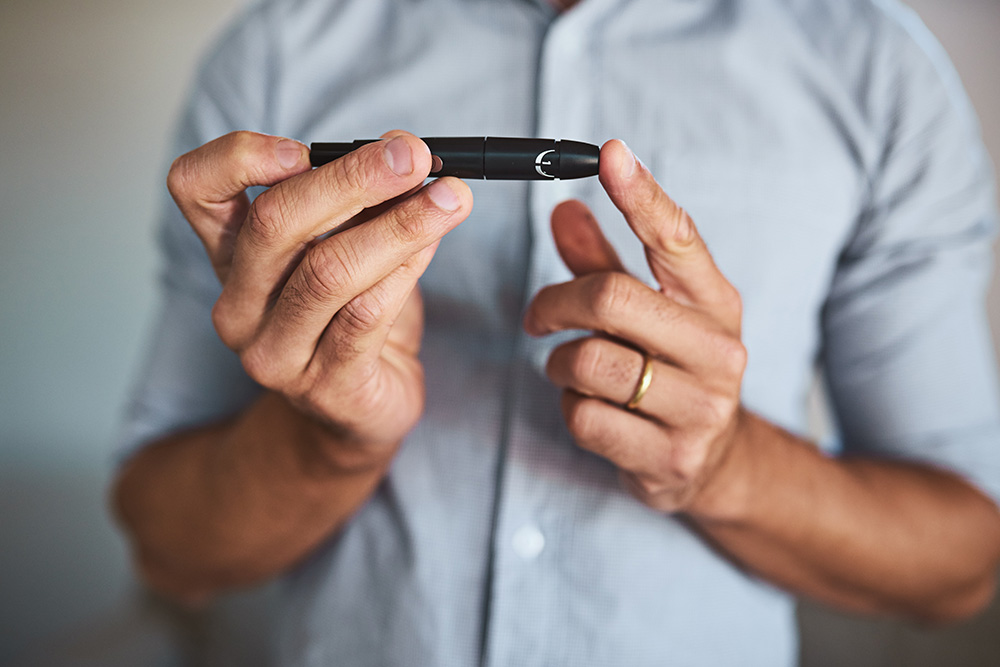Celebrate National Diabetes Month: What to Do Before You Begin Activity

It doesn’t matter whether you’ve been active in the past or not — you can still start now.
According to the American Diabetes Association (ADA), over 30 million children and adults in the United States have diabetes, 84.1 million American adults have prediabetes, and 90 percent of them don't know they have it. And, 7.2 million Americans have undiagnosed diabetes while 1.5 million Americans are diagnosed with diabetes every year. With numbers like these, even if you aren't personally affected by the disease, you probably know someone who is.
Regardless of your exercise routine or activity preference, staying active can help you manage diabetes, help you control your weight, can help keep your blood glucose in the healthy range, and can help prevent or delay complications. So where do you begin? Here are a few tips to help you before you begin an activity.
Choose Your Activity
Physical activity is anything that gets you moving, such as walking, hiking, or even gardening. Regular activity is important for everyone, but especially for those who are at risk of diabetes or are diabetic. The goal is to find some sort of activity you enjoy, whether that’s gardening, walking or even golf.
Speak With Your Doctor
Before you begin any activity, speak with your physician first. Here you can discuss the type of activities you’re thinking of trying. If you have any diabetes complications, there may be certain exercises you should avoid. You can discuss this with your health care provider. The ADA suggests you discuss the following with your doctor:
- Tell your provider if you have any pain in your chest.
- Talk with your provider about joint or bone problems that make it difficult for you to exercise.
- Ask about how increasing your activity level might impact any medicines you take for diabetes, blood pressure, and/or heart conditions.
- Ask what exercises are safe for you and what you need to avoid.
- Ask if there are times when you should avoid activity.
Make Sure to Warm Up
Whatever activity you partake in, it’s important to warm up your body and get ready for movement. Try doing easy, dynamic movement, which helps get the muscles and joints warmed up for activity. As you stretch, breathe and do each movement for 15 to 20 seconds. Stretching should feel mild and relaxing. It should never feel uncomfortable or painful.
Drink Plenty of Water
The American Council on Exercise recommends drinking 17 to 20 ounces of water two to three hours before beginning your workout. About 20 to 30 minutes before your workout, drink another 8 ounces. While you are exercising, drink 7 to 10 ounces every 10 to 20 minutes. Drinking water will help prevent dehydration and keep you going during activity.
Check Your Blood Glucose Level
It's important to check your blood sugar level before activity to help prevent hypoglycemia. When you’re done with the activity, recheck your blood glucose. It’s important to understand your numbers and notice how your levels react as you add regular physical activity into your lifestyle. Understanding these patterns can help you prevent your blood glucose from going too high or too low.
Wear Medical ID
It’s important to wear a medical identification bracelet, necklace or ID tag stating you are someone with diabetes in case of an emergency. It’s a good idea to have your cell phone with you as well in case you need to call for medical assistance asap.
Wear Appropriate Footwear
Take care of your feet while exercising. A good pair of athletic shoes can help reduce stress on your feet and joints, as well as help prevent skin irritation or foot complications.
Inspect Your Feet
Before exercise, make sure to look at your feet for any open wounds, blisters, or other signs of skin irritation. Speak with your doctor if you notice you have a foot injury or irritation that’s not healing.
There’s no better time than now to commit to a healthier lifestyle, whether you have diabetes or prediabetes.
Shop for athletic shoes for your activity.
The contents of this blog were independently prepared, and are for informational purposes only. The opinions expressed herein are those of the author and are not necessarily indicative of the views of any other party. Individual results may vary depending on a variety of patient-specific attributes and related factors.
